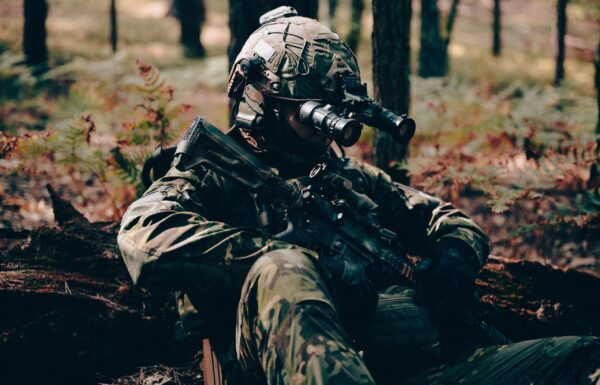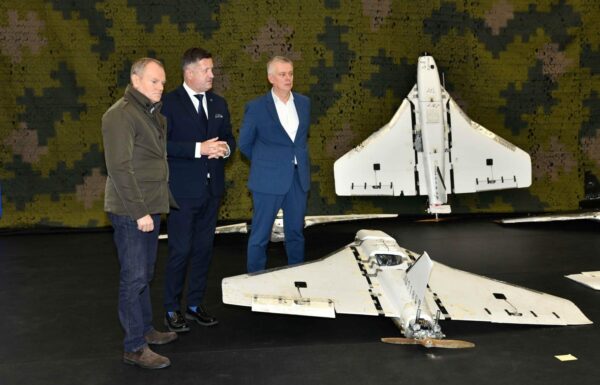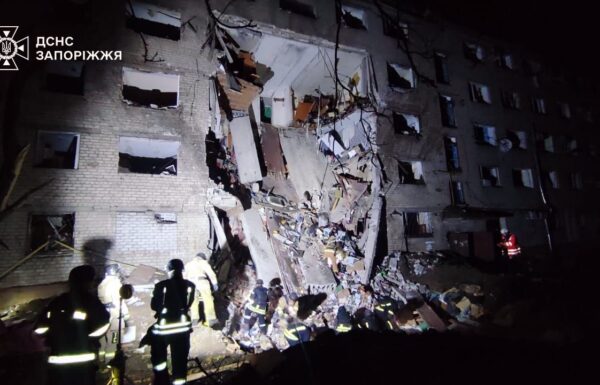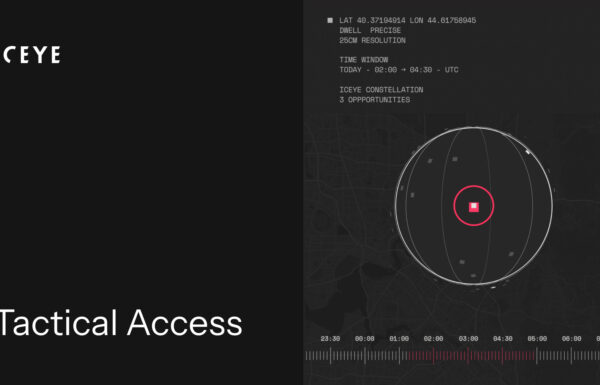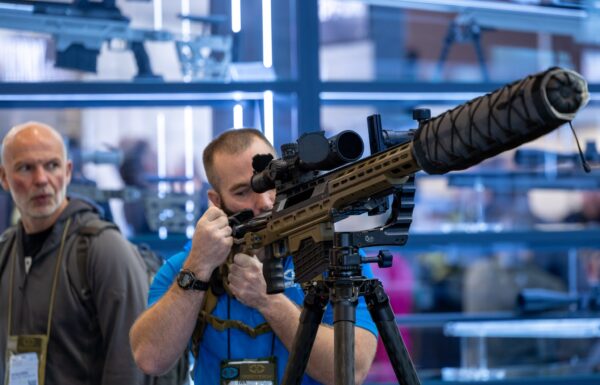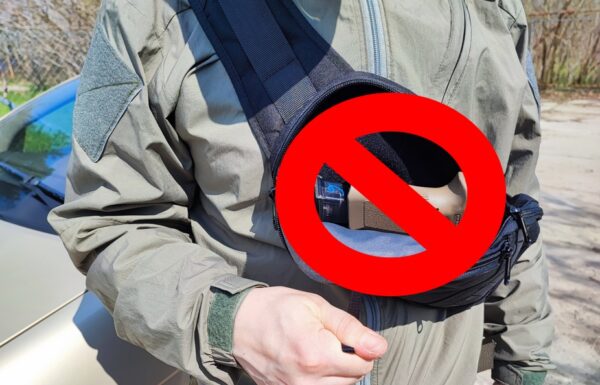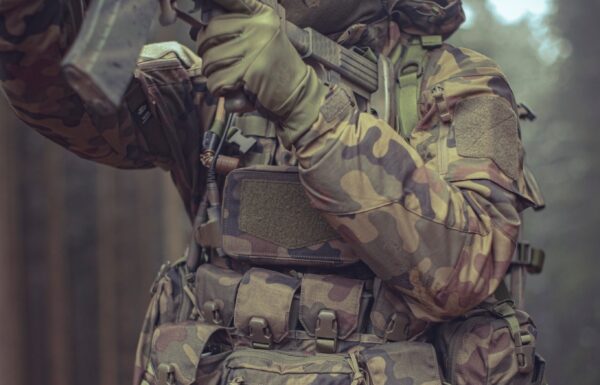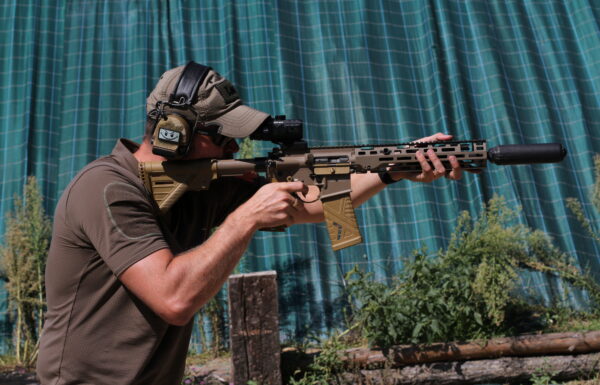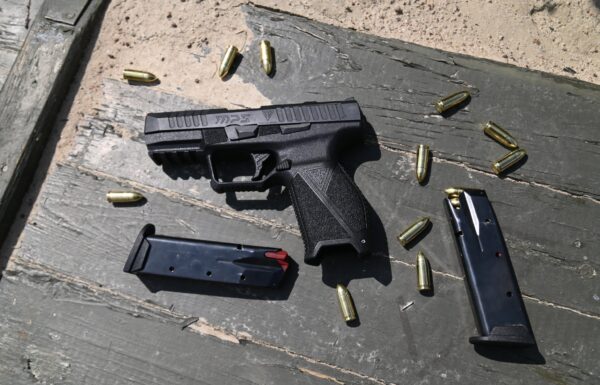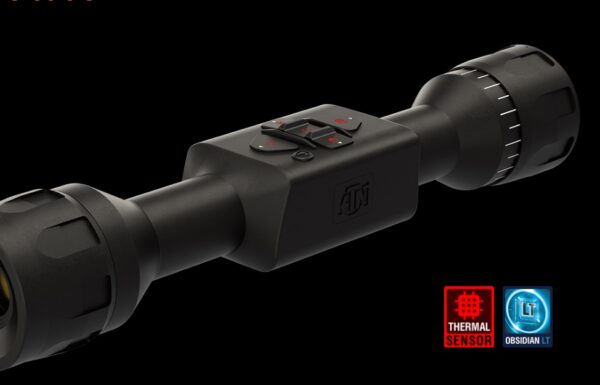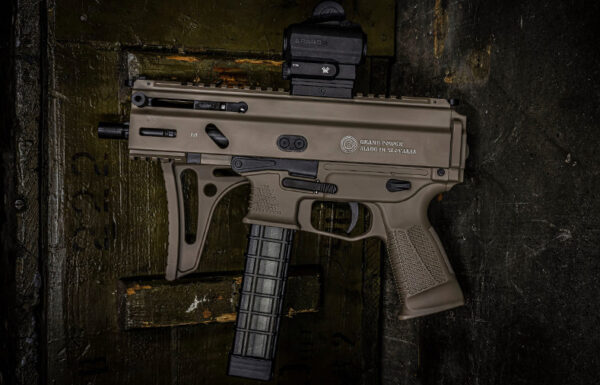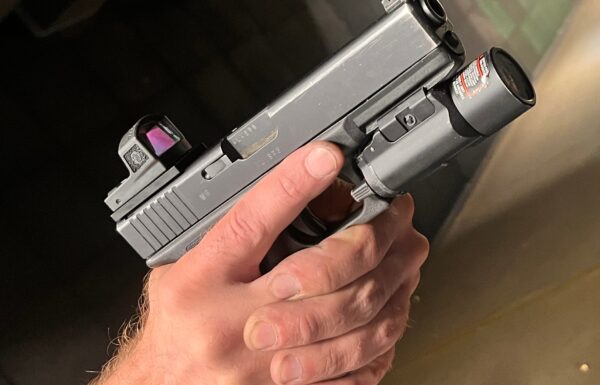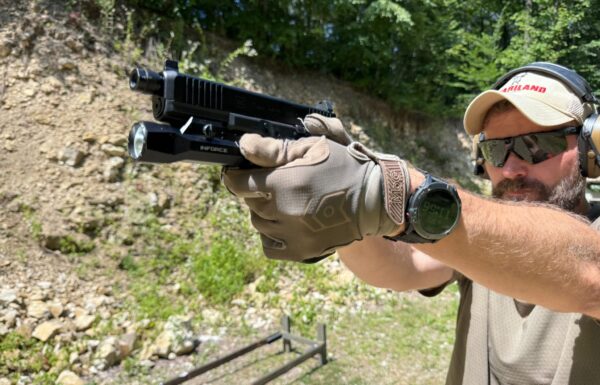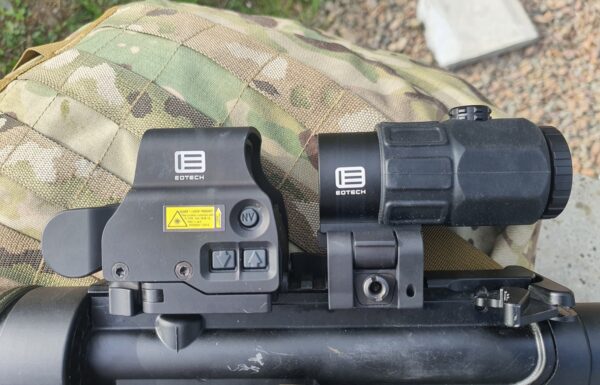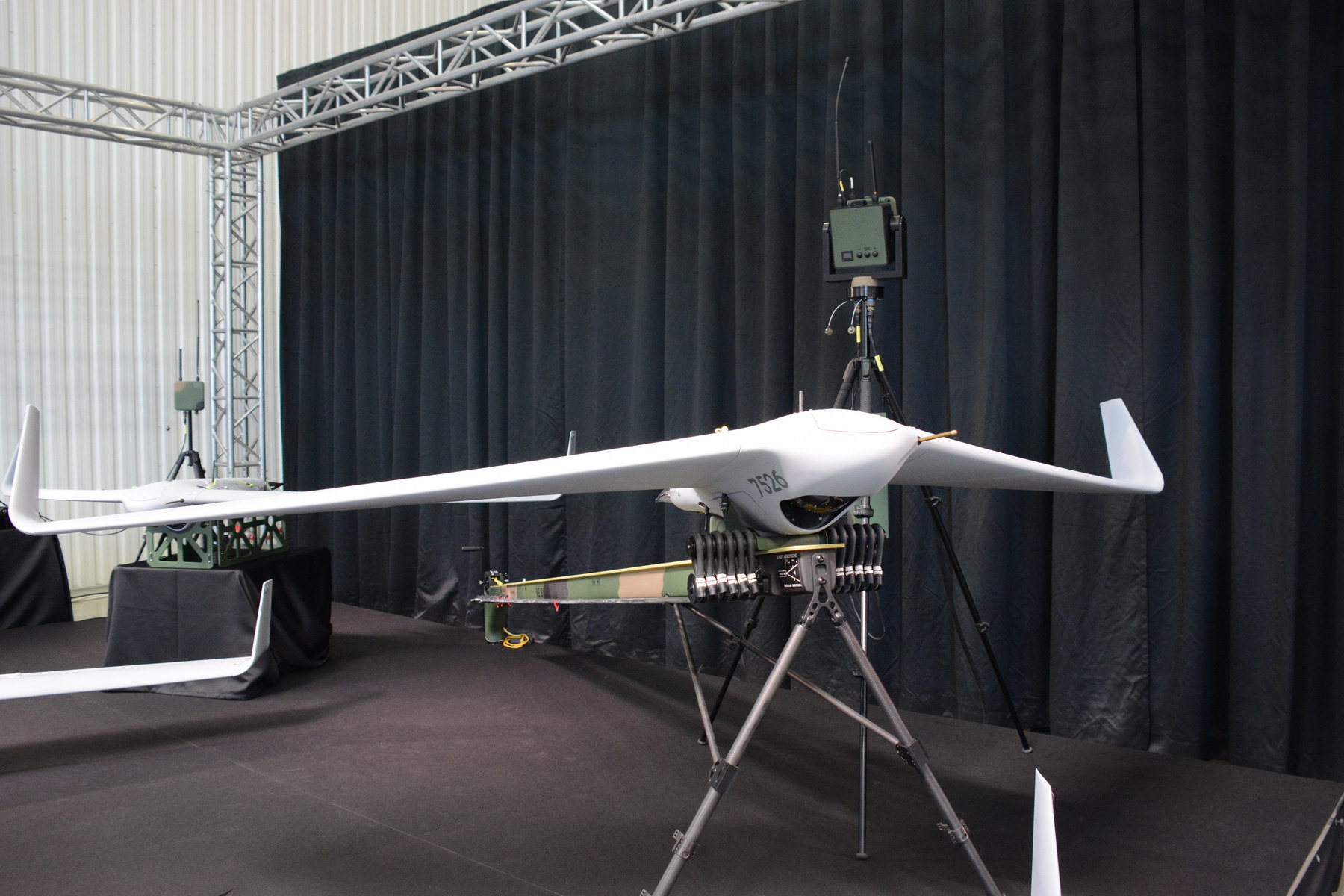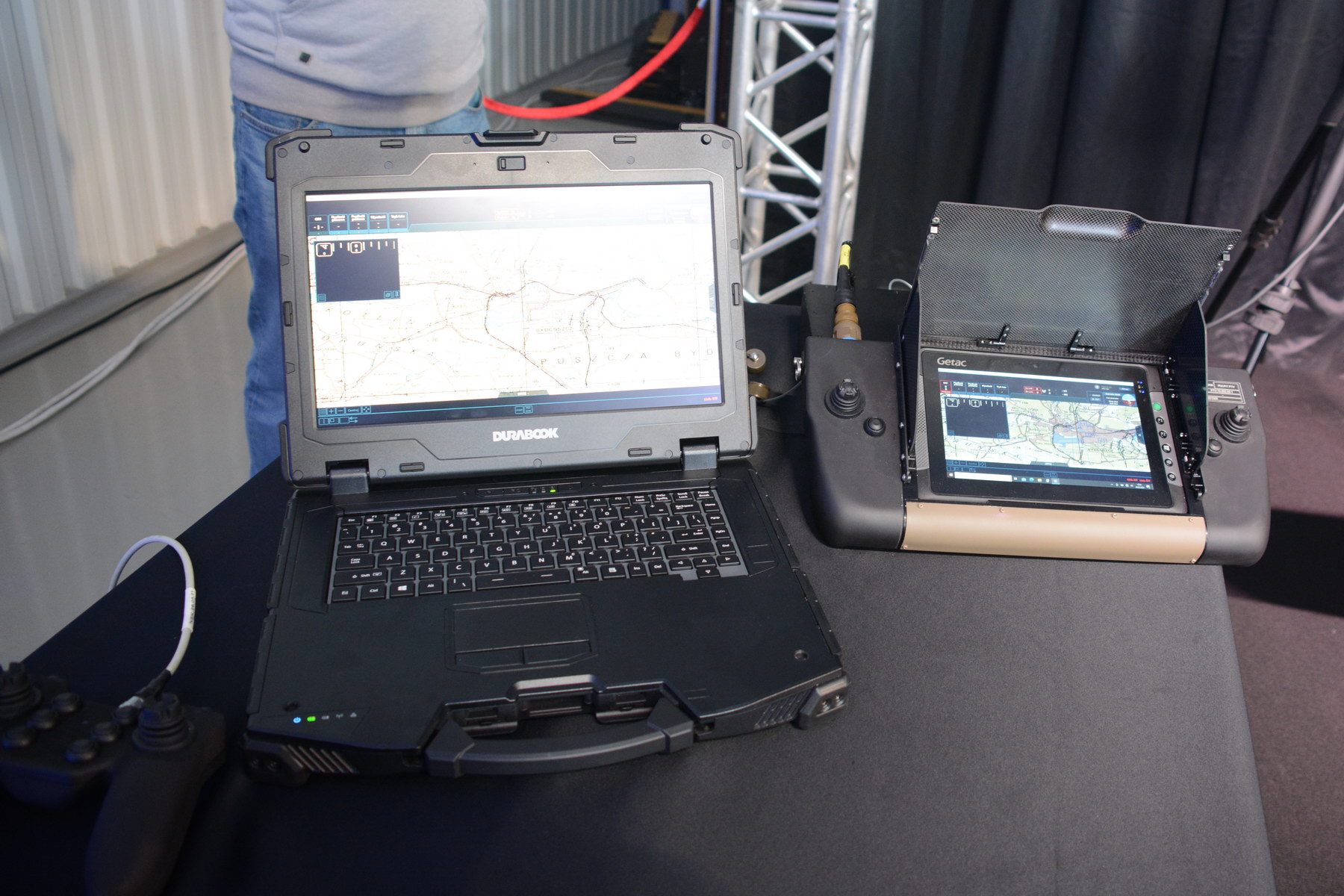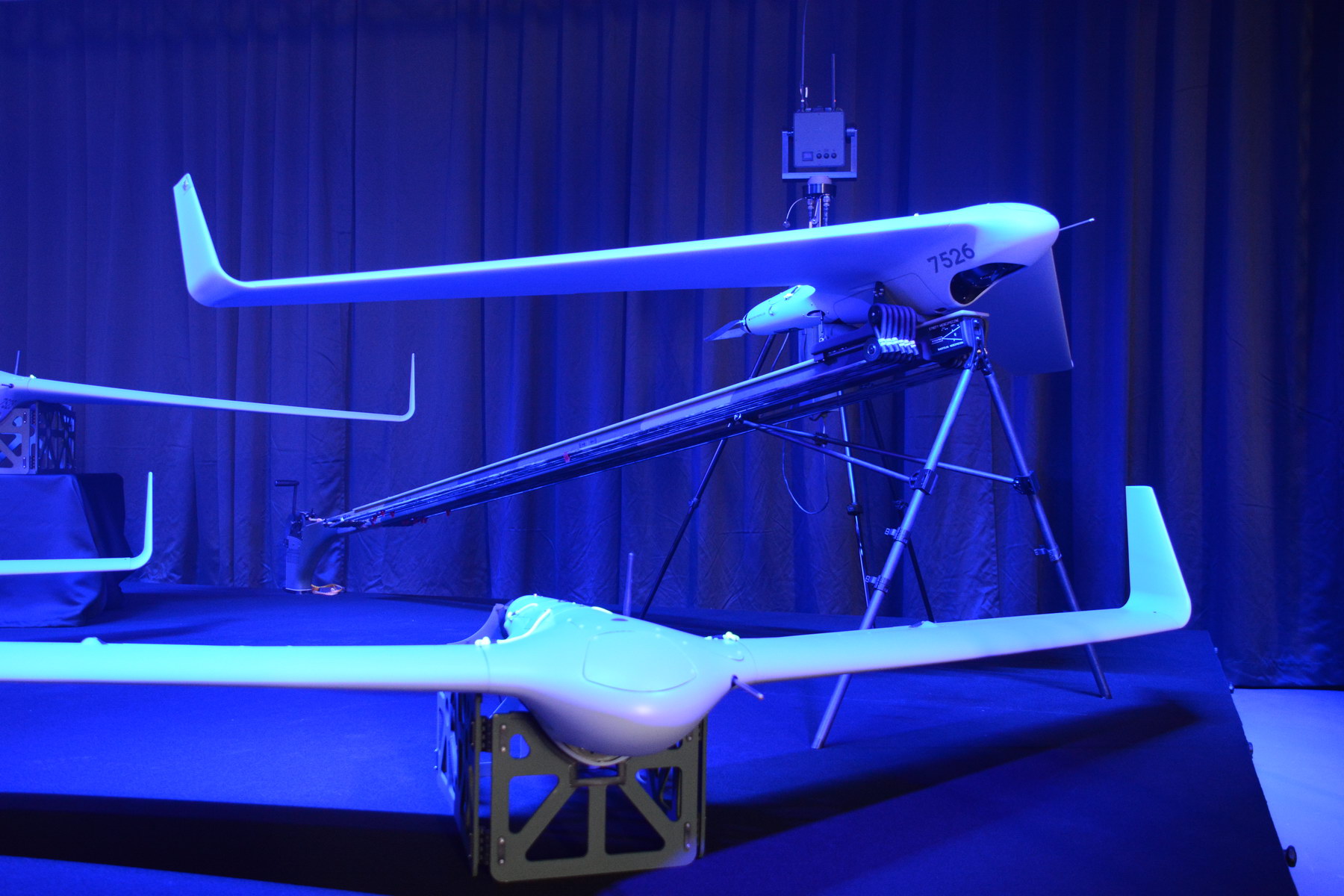On Thursday, May 29, 2025, a ceremonial launch of deliveries for the Wizjer mini-class unmanned aerial vehicle (UAV) system took place in Bydgoszcz. As noted, in this case, the ceremony followed the actual delivery of the first units, unlike in the past when such events typically marked the start of a given program.
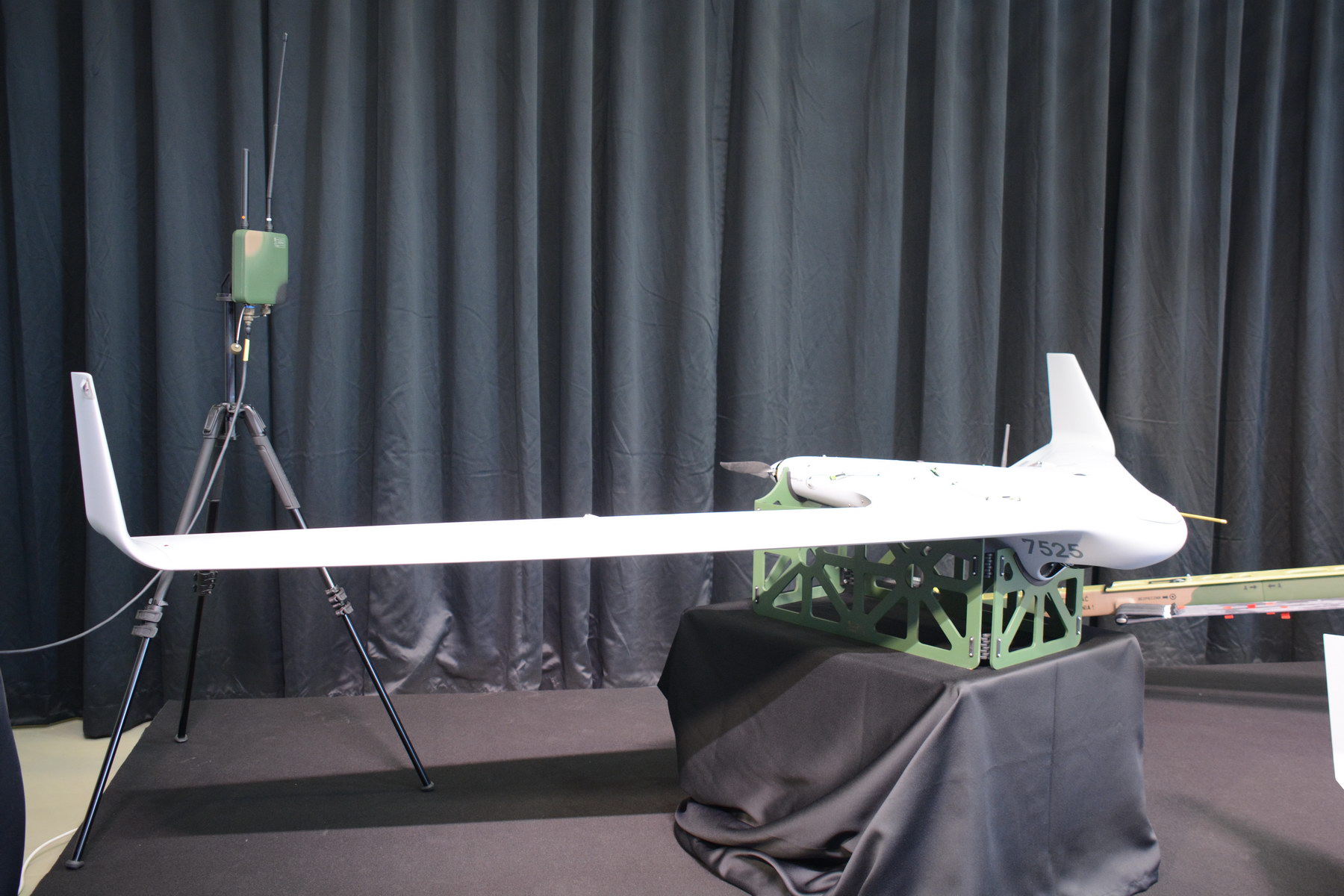 Wizjer system unmanned aircraft. In the background, the antenna of the Portable Video Terminal (PTV) is visible / Photos: Przemysław Gurgurewicz, MILMAG
Wizjer system unmanned aircraft. In the background, the antenna of the Portable Video Terminal (PTV) is visible / Photos: Przemysław Gurgurewicz, MILMAG
Among the attendees were Deputy Prime Minister and Minister of Digital Affairs Krzysztof Gawkowski, Undersecretary of State at the Ministry of State Assets Konrad Gołota, and the Head of the Air Force Technology Directorate at the Armed Forces Support Inspectorate, Colonel Tomasz Polus. During the ceremony, Zbigniew Matuszczak, Technical Director and Member of the Board at WZL-2, announced that the first two sets had already been delivered to users on Tuesday and Wednesday. Additional sets are also ready. Sets no. 11 and 12 are currently undergoing acceptance by the regional military representation.
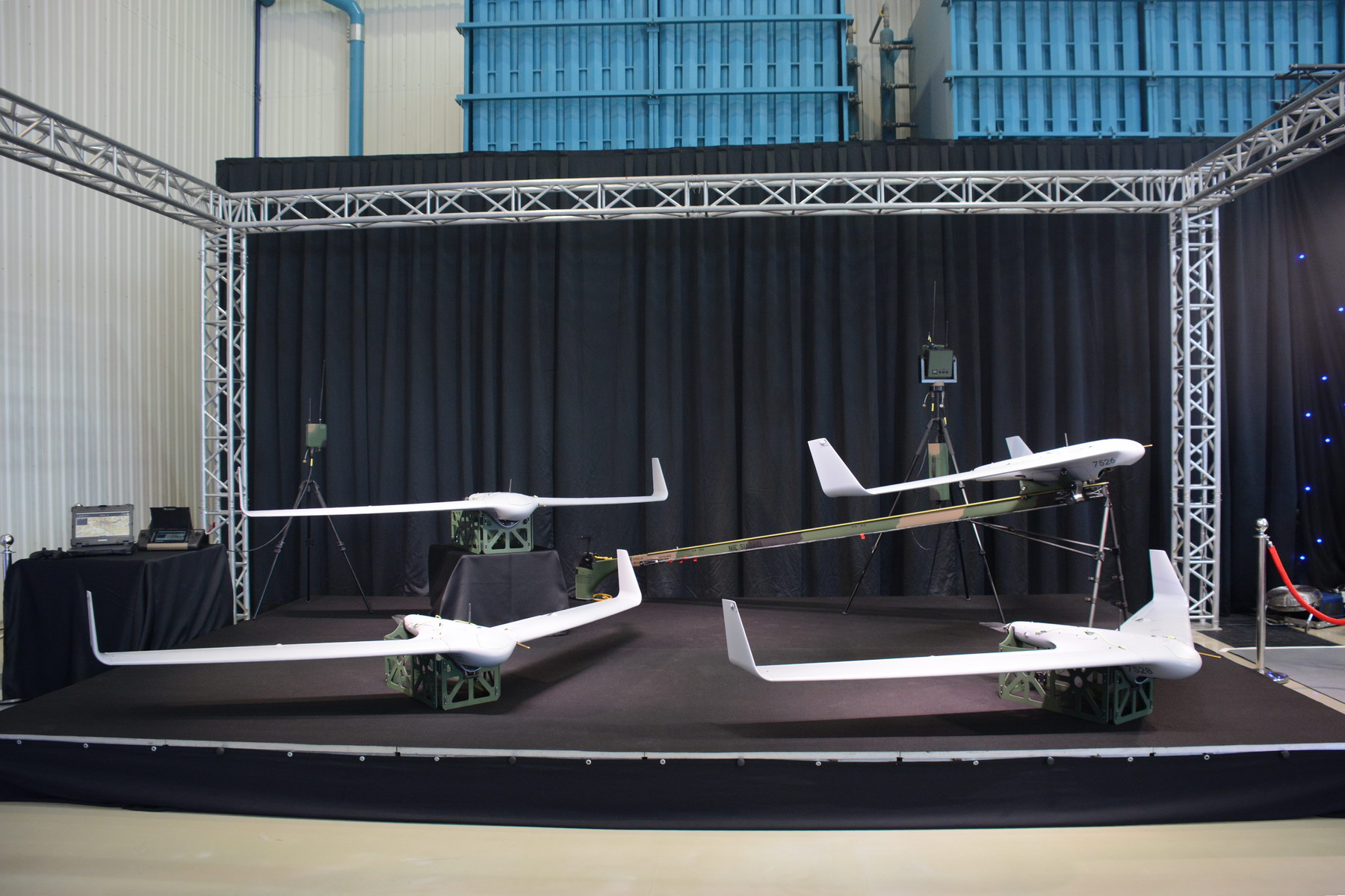 During the ceremony, two sets were displayed, including one in a deployed configuration
During the ceremony, two sets were displayed, including one in a deployed configuration
The contract for the delivery of SBSP Wizjer systems was approved by Minister Błaszczak on December 29, 2021. The agreement, signed between a consortium consisting of the Polish Armaments Group (PGZ) as the lead entity, WZL-2 in Bydgoszcz as the technical lead and final system integrator, and WZL-1 in Dęblin as the supplier of composite structures, along with the then Armament Inspectorate, under contract number IU/35/IX33/ZSNEGZJW/DOS/Z/2018, stipulated that the Polish military would receive 25 complete sets between 2024 and 2027, along with a logistics and training package. Each set includes: 4 unmanned aircraft (aerial platforms), 4 EO/IR electro-optical sensor heads, 1 launch catapult, 1 ground control station (GCS), 1 ground data terminal (GDT), 1 portable video terminal (PVT), 1 maintenance kit. The entire system is packed into 10 transport cases, plus an eleventh case containing the logistics package—consisting of consumables and repair kits. Compared to the original schedule, the program experienced some delays. It was only on March 20, 2025, that the consortium announced the successful completion of ground and flight testing. However, serial production has now begun, and according to Jakub Gazda, Acting President of WZL-2, doubling the number of sets produced would not be a problem for the consortium.
The SBSP system was developed by the Air Force Institute of Technology (ITWL) for the needs of the Land Forces and Special Forces. It is intended for conducting optical reconnaissance operations at a depth of approximately 30–35 km, including the detection, recognition, identification, and geolocation of targets. To achieve this, the system’s unmanned aerial vehicles are equipped with a dual-sensor electro-optical head featuring a daytime camera with a resolution of 1280×720 pixels and up to 30x optical zoom, as well as an infrared night camera with a resolution of 640×512 pixels. This configuration ensures high-quality reconnaissance data both day and night. The observation system is capable of automatic target tracking and real-time geolocation of observed objects.
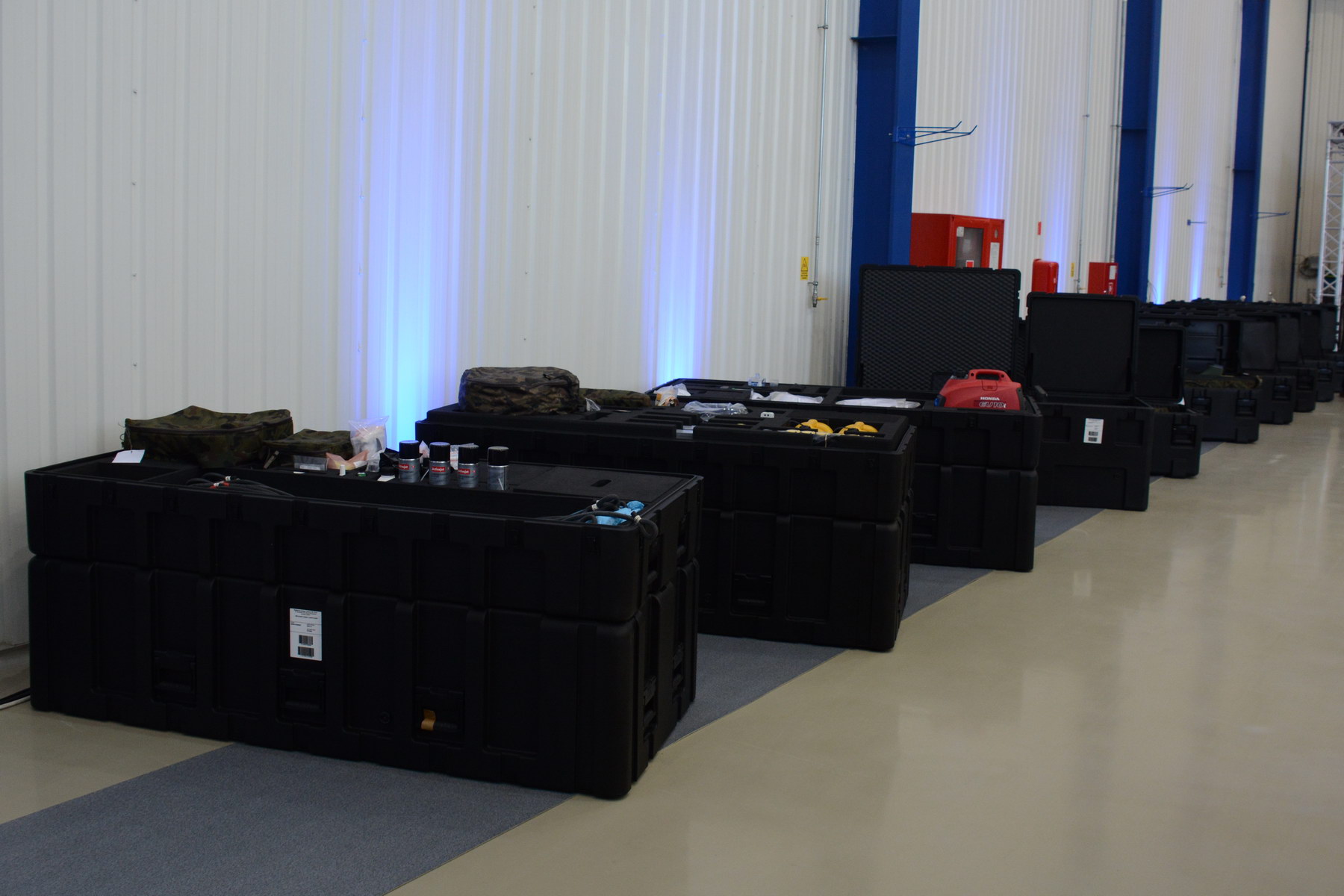 A complete SBSP Wizjer system, including the logistics package, fits into 11 transport cases
A complete SBSP Wizjer system, including the logistics package, fits into 11 transport cases
The SBSP Wizjer unmanned aircraft launches automatically using a 13 kg composite launch catapult and performs an automated landing maneuver using a parachute and an air cushion.
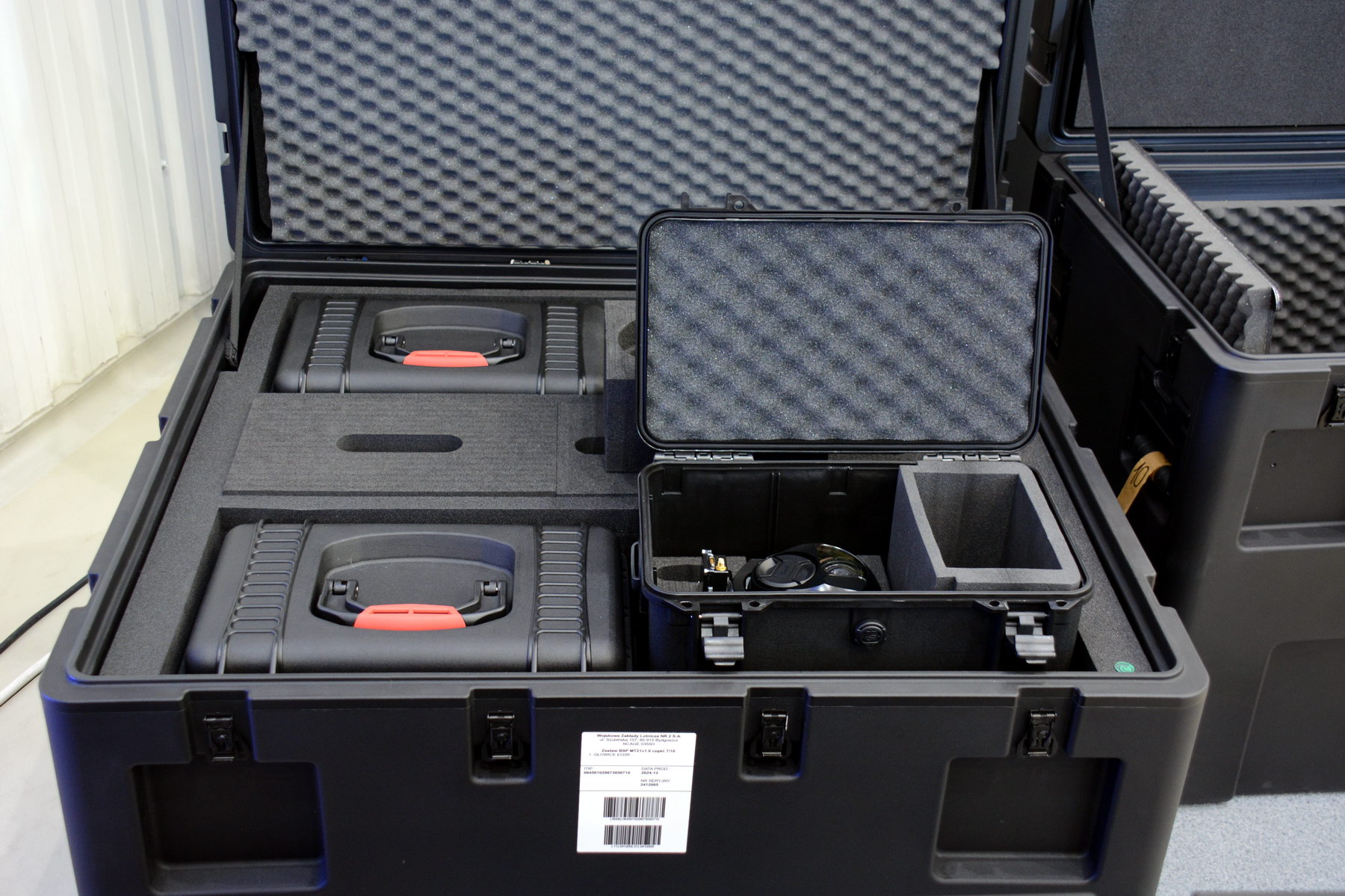 One of the system’s cases containing 4 electro-optical sensor heads
One of the system’s cases containing 4 electro-optical sensor heads
The manufacturer emphasizes that Wizjer stands out among similar solutions due to its ability to carry out missions in challenging weather conditions, including rain and fog, its open architecture that allows for system expansion, and an innovative mechanism for sensor head positioning during operational flight phases. The user interface, praised for its intuitiveness, was developed based on experience gained from other systems.
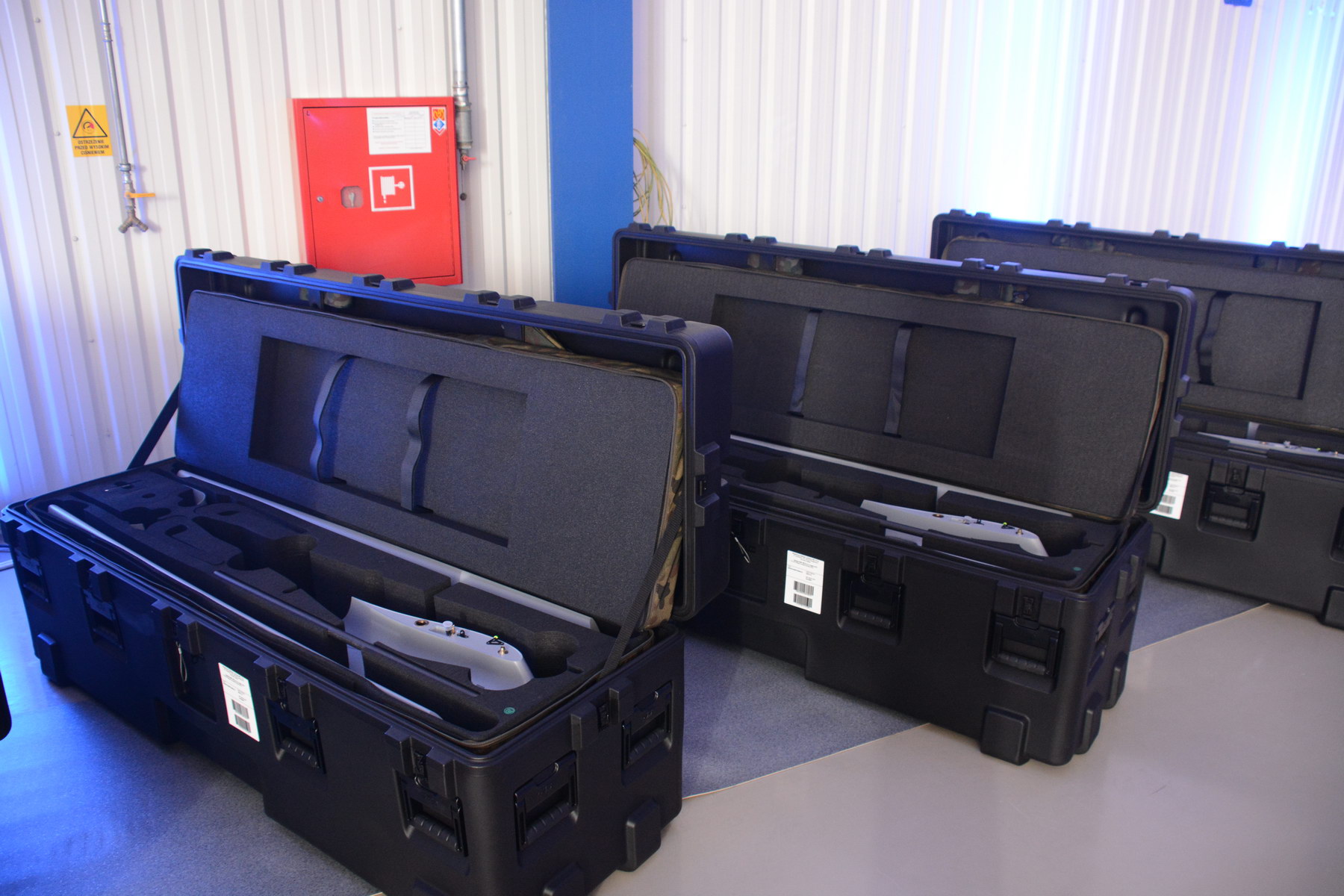 Cases containing the unmanned aircraft of the system. Each case holds one complete airframe. The padding and protective covers for the cases are provided by the Polish company Castelior
Cases containing the unmanned aircraft of the system. Each case holds one complete airframe. The padding and protective covers for the cases are provided by the Polish company Castelior
The SBSP Wizjer system is also equipped with an advanced simulator that uses the actual Ground Control Station (GCS). It enables training in all system functionalities, with the ability to simulate various weather conditions and create custom tactical scenarios.
Technical specifications of the unmanned aircraft:
- Minimum speed: 65 km/h
- Maximum speed: 120 km/h
- Altitude (AMSL): 4000 m
- Range (LOS): 30 km
- Maximum takeoff weight: 13 kg
- Flight time: >3 hours
- Electric propulsion with a two-blade pusher propeller
- Low noise emission
- Operating temperature range: -30°C to +50°C
See also:









